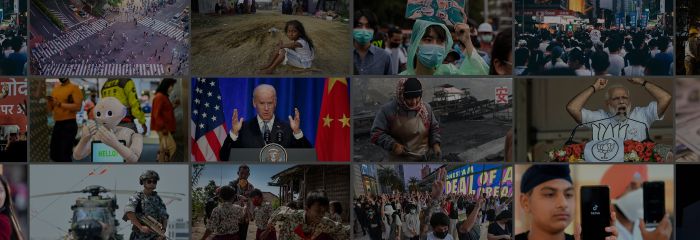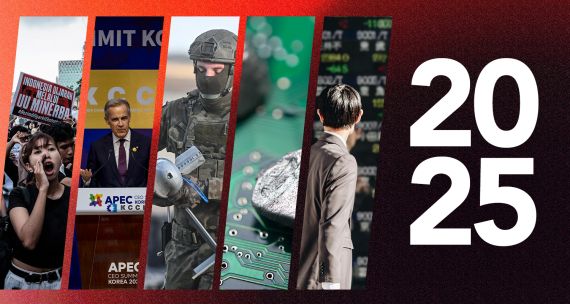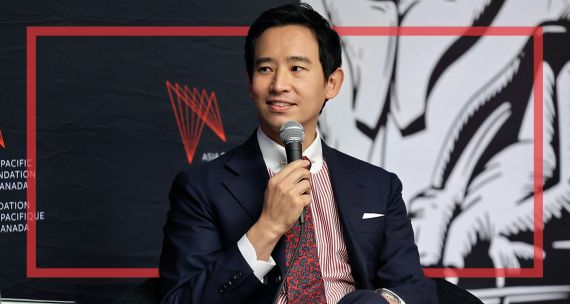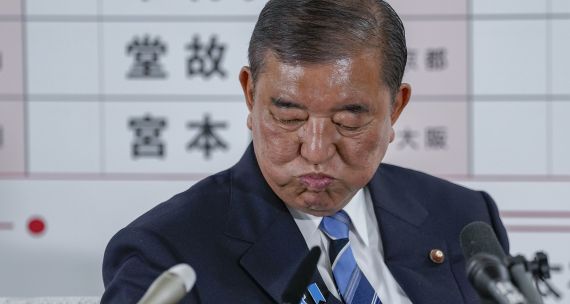Few foresaw the critical event that would drastically change the course of the year 2020: the COVID-19 pandemic. The global health crisis took much of the world by surprise and precipitated governance and socioeconomic crises that will take years to recover.
Several countries in the Asia Pacific are still dealing with a third or even fourth wave of the virus and local outbreaks. But the region as a whole has been relatively successful at preventing the spread of the virus. While Asia’s economy is supposed to shrink in 2020, the Asian Development Bank expects it will rebound strongly in 2021. But how the region recovers and how it will evolve in 2021 will depend on many uncertainties and trends.
APF Canada’s Asia Watch newsletter has been a cornerstone of our work tracking and reporting on uncertainties and trends that can affect Canadian interests in Asia. From digitalization to diplomacy, the COVID-19 pandemic has profoundly impacted Asian affairs and accelerated a series of movements already in motion.
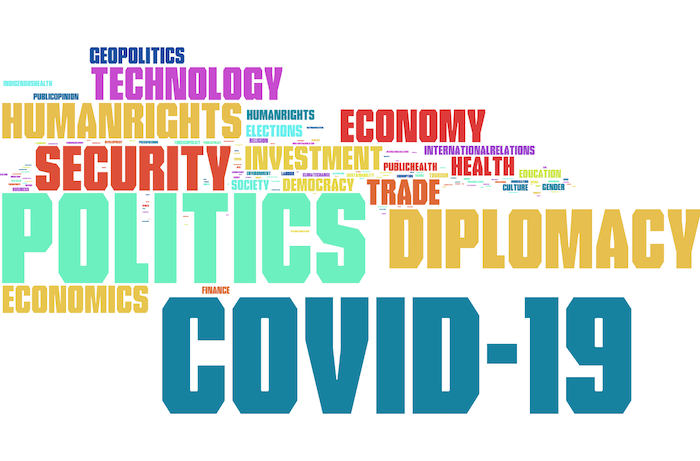
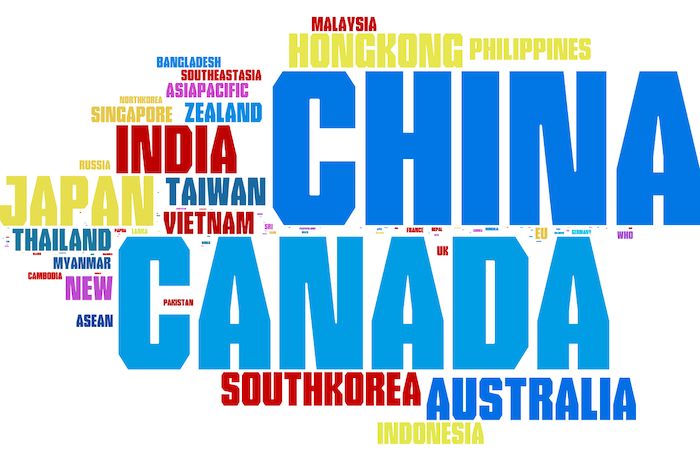
And like previous years, this work enables us to turn our gaze to the coming year and discuss 10 trends to watch in Asia in 2021. This year we highlight 10 things that deserve special attention.
With the U.S. presidential elections over, the world is preparing for a post-Trump world.
The impact that president-elect Joe Biden will have on U.S. foreign policy in general and particularly toward China will be significant.
The Free and Open Indo-Pacific, a concept that gained momentum in 2020, with many countries releasing their Indo-Pacific strategies, will also see further development in the year ahead that will be key for anticipating how the region evolves in 2021.
India will be a crucial state to watch in 2021, not only because of how it manages and recovers from the pandemic or how it deals with its spat with China along their shared border but also to track how the country evolves domestically under a populist leader.
National security concerns drove many countries to disrupt supply chains and protect some of their own industries. How far governments in the region will push their protectionist agendas will be critical for anticipating post-COVID-19 scenarios.
Various crises have rocked Asia in 2020, and many will reverberate in 2021. For example, the Rohingya crisis has overshadowed other ethnic violence in the Rakhine state in Myanmar that the November 8 general elections didn't calm.
The growing calls to reform the Thai monarchy and the constitution that have rocked the country over the last few months are still ranging and will necessarily see further developments in the coming year. How the 'Milk Tea Alliance' will affect Thailand's protest remains to be seen, but this solidarity movement against authoritarianism will also be one to follow.
Changing consumer behaviour that the COVID-19 pandemic triggered accelerated the digitalization wave that was already sweeping across the largest ASEAN economies. We expect this to accelerate further in 2021.
The pandemic has specifically impacted micro, small and medium-sized enterprises (MSMEs). How countries stimulate the economic recovery and support MSMEs in Asia, notably through assisting with MSME digitalization, will also be a key trend to follow.
The year 2020 has also shown us how vulnerable the Asia Pacific region is to climate change. And a few countries, notably China, Japan, and South Korea, took pledges to bring down their carbon emissions to zero before 2060. The coming year is an important one for seeing whether or not these countries and others implement practical, realistic measures to meet their ambitious goals.
Welcome to APF Canada's sixth annual year-end dispatch, where our research team turns its collective gaze to the coming year. Reviewing a year's worth of Asia Watch dispatches, we highlight the trends, the newsmakers, the current events from 2020, and what we'll be watching in Canada-Asia Pacific relations in 2021.
Enjoy our 10 Things to Watch in 2021 dispatch below, or download our infographic to enjoy at your leisure.
1. Biden's Stance on China
China: Biden’s 'special challenge'
With President-elect Joe Biden weeks away from moving into the White House, one of the main questions relates to the future of American foreign policy, especially pertaining to China. Balancing U.S.-China trade and confronting Beijing over its industrial policies to bring jobs back to the U.S. have been among President Donald Trump’s primary foreign policy priorities.
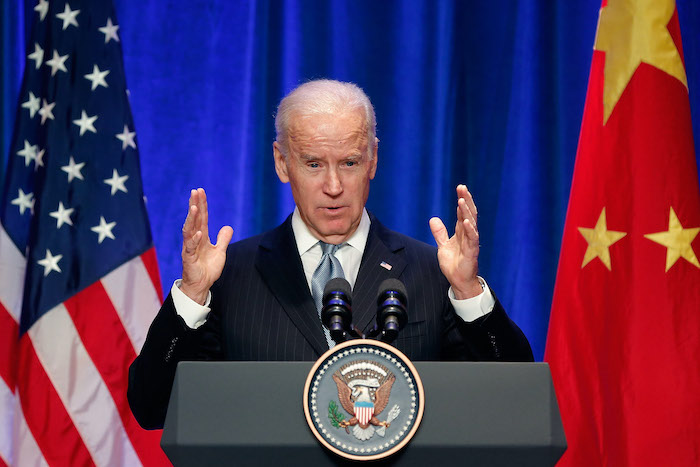
China also loomed large during the presidential campaign, with Trump trying to make the case that he was the only one that could be sufficiently “tough” on China. Although confronting China on specific aspects of both its domestic and foreign policies was overdue, Trump’s unilateral crusade and narrow focus on rebalancing trade with China via significant sanctions and various visa bans initiated a “decoupling.” But the policy didn’t yield the expected results. Meanwhile, China was becoming more authoritarian at home and aggressive abroad.
However unsuccessful Trump’s whole approach to China was, the underlying conditions enabling a confrontational policy toward China will persist. A “tough” China policy remains supported by a staggering number of Americans and a bipartisan consensus in Congress. Biden could very well seek to deescalate tensions, but he will have to show strength. But as Joe Biden’s personality and worldview differ from Donald Trump’s, we can expect some changes to Washington’s China policy in 2021.
A potential transatlantic approach
During the last four years, the Trump administration has alienated allies and failed to convince them to take a confrontational stance on China or to side with Washington over Beijing. When Trump was elected in 2016, China was seen as having the most attractive market globally, and China-related issues were less contentious in the West. But we have witnessed a clear shift over the last few years. An increasing number of countries in which unfavourable public opinion toward China is at a “historic high” are now finding themselves in competition with it and seeking more reciprocity in their relationship. Some are also calling out China on specific issues and collaborating to balance its influence.
The European Union is a case in point, as it has shifted its positions on the challenges China poses regionally and globally and over human rights. The U.S. and E.U. have already started to find some common ground on China in recent months, as illustrated by the establishment of the U.S.-EU Dialogue on China on October 23. Transatlantic coordination on China will likely continue in 2021, and this could open another avenue for Canada to engage with the country. While the Trump administration cast China’s Communist Party as the enemy, the E.U. faced China on some issues but collaborated with it on other matters, such as the environment and climate change. Reviving the global dialogue on this issue will be critical and collaboration between the U.S., the E.U., and China would be key in this effort.
It takes two to tango
Beijing is undoubtedly hoping diplomacy with the U.S. can be restored and that relations improve under a new administration. But it also sees Biden with apprehension as he could take a harder line on human rights, further support Taiwan, and try rallying allies around a common approach. But while all eyes are on the president-elect, it takes two to tango, so it will be equally, if not more important, to watch how China conducts itself in 2021. Besides trade issues, how China handles the many bilateral bouts it is involved in, and how it reacts to some degree of collective pressure over issues such as Hong Kong, Taiwan, and Xinjiang will also be something to watch in 2021. China's moves on these fronts will influence how the U.S. and other countries' positions on China evolve.
The Trump administration’s “America first” doctrine presented China with the opportunity to play the role of the responsible superpower, but it blew it. A new president in the U.S. offers an opportunity for both sides to change course. Will China take action to deescalate and facilitate a rapprochement with the U.S.? As the world prepares for a post-COVID-19 pandemic, China is gearing up to host the Olympic Games only 35 days into 2022. 2021 will be a big year for China, too.
2. The Rise of an 'Indo-Pacific' Paradigm
Redefining the region
Among the most significant developments in the Asia Pacific in 2020 has been the move by several of the region’s predominant powers to expand Asia’s geographic scope to include the Indian Ocean area, thereby reconstituting the Asia-Pacific to the Indo-Pacific.
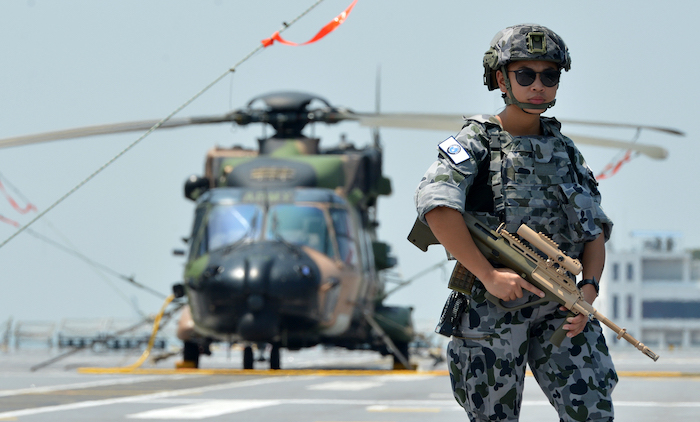
Far more than a simple matter of semantics, attempts by Australia, India, Japan, and the United States to advance an Indo-Pacific rebrand represents a concerted effort to establish a loose consortium of “likeminded states” capable of balancing China’s activities and influence in Asia, Africa, and the Middle East. While ostensibly a comprehensive vision including economic, political, and social initiatives and ties, these same states have most clearly articulated their intentions in security terms. The most demonstrable aspect of their engagement is the Quadrilateral Security Dialogue, or Quad.
Conceptual differences remain
Notably, there are significant differences between the conceptions of the Indo-Pacific. For example, India has articulated a more inclusive Indo-Pacific concept; one that accepts China as a regional actor while concurrently calling for its foreign and security policy restraint. Similarly, Japan has recast its own Indo-Pacific vision to accommodate China’s influence, particularly in Southeast Asia, where Tokyo has prioritized its relations with the ASEAN member states. Conversely, Australia and the United States have formulated far more confrontational views of the Indo-Pacific region. They have identified their militaries as the primary means to achieve their shared goals of ensuring a “free” and “open” Indo-Pacific.
Canada has yet to fully articulate its understanding of the Indo-Pacific region or the Free and Open Indo-Pacific strategy, despite Prime Minister Justin Trudeau’s pledge to coordinate with Japan in the region in April 2020. Part of the challenge around committing to an Indo-Pacific vision comes from the potential costs associated with conceptual alignment. This is mainly due to the Trump administration’s increasingly belligerent usage, including racial and cultural terms, of the concept to justify a soft containment strategy of China in the region.
Despite this clearly unacceptable view of the Indo-Pacific, there is a growing alternative interpretation of the concept that could justify Canada’s strategic engagement and/or alignment. The ASEAN member states, for instance, have adopted the Indo-Pacific Outlook, which summarily rejects the U.S. vision by insisting on a diverse and inclusive interpretation of the super-region. France and Germany have also published Indo-Pacific guidelines that call for broad engagement, including with China, across non-security dependent issue areas. Importantly, Japan is also slowly recasting its Free and Open Indo-Pacific strategy to become less confrontational and more focused on regional integration.
The 'Asia Pacific' in 2021
Should the incoming Biden administration reject President Trump’s more outlandish language for a more communal approach to Asian affairs in 2021, Canada could benefit from selective adoption of the Indo-Pacific concept. Yet, one important caveat remains as to why Canada might want to reject the Indo-Pacific construct in favour of the Asia Pacific geographic referent area. Far from expanding their economic ties to include Africa and the Middle East, most Asian states are instead doubling down on an Asia Pacific economic and political community. A development most clearly displaying this is the 15 Asia Pacific states’ agreement on Regional Comprehensive Economic Partnership and China’s expressed desire to join the Comprehensive and Progressive Trans-Pacific Partnership (CPTPP) free trade agreement. Among a clear tightening of Asia Pacific institutions such as ASEAN, these developments suggest the future remains in the Asia Pacific, not the Indo-Pacific. In 2021, Canada would be better served to play to its comparative strengths in the already broad Asia Pacific – including its participation in the CPTPP – than in recognizing a more expansive region that does not reflect its interests or the Asia Pacific’s actual development trends.
3. India Under the 'Modi Raj'
Democracy under attack
After being named Time’s Person of the Year, Indian Prime Minister Narendra Modi clearly continued to charm voters, securing a second term with a landslide victory in 2019. While Modi’s popularity with the masses seems unaffected, the administration’s journey since the 2019 elections has been rocky. The sectarian and divisive politicking has resulted in curbing and threatening Indian Press freedom, forceful restructuring of an Indian state into union territories, implementation of exclusionary acts such as the Citizenship Amendment Act, and giving space to absurd agendas such as “Love jihad.”
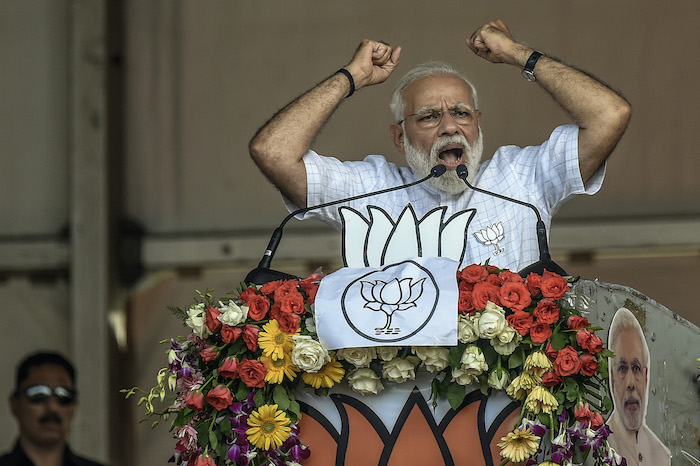
All this in just one year, and in addition to the domestic havoc caused by COVID-19. Indians either admire Modi and are ready to jump on the “self-reliance” bandwagon, or loathe him. However, the public spheres to voice dissatisfaction with the current government and its head are getting smaller and smaller. Referred in many circles as the “divider in chief,” Modi may have disrupted the barrier between the ruling elite and the masses in the world’s largest democracy through his approachable social media communication. Still, his administration’s crackdown against dissenters and non-supporters spells impending doom for the democratic rights of Indians.
Economics of a populist agenda
India, the fifth-largest world economy, was projected to be the fastest-growing Asian economy until 2019. The downward trend in India’s GDP growth rate over the past four years indicates an economic slowdown worsened by the pandemic. Meanwhile, the Modi administration has carefully drawn the Indian public into its populist campaign “Make in India” and increased its emphasis on self-reliance (Atmanirbhar Bharat). The Modi government’s liberalized foreign direct investment (FDI) policies further stimulate domestic manufacturing and feed into Modi’s Make in India initiative. According to UNCTAD, FDI in India grew by 20 per cent from 2018 to an all-time record high of US$51 billion in 2019. The recent border clashes with China have enabled Narendra Modi to shore up more support for his self-reliance campaign by directing public distrust toward neighbouring China, and distracting from the pertinent issues of COVID-19 and the economic recession, and their impacts on the vulnerable members of Indian society. Rest aside the fact that Modi’s seemingly stringent measures against China have essentially helped India bridge the growing trade deficit with China. Analysts point out that the self-reliance policy, while glamorous, is not yet practical.
Will India survive?
As Ramachandra Guha notes in his book, India after Gandhi, India’s future has always seemed uncertain to the onlooker. The fact that despite its differences, India continues to survive and thrive is often confounding, and 2021 will be no different. The lack of internal cohesion, the populist agenda, and the tensions with neighbouring countries undercuts India’s foreign policy based on the spirit of Panchsheel, the five principles of peaceful coexistence and non-alignment.
Modi’s appearance at the Non-Aligned Movement (NAM) meeting in May 2020 sent out mixed signals about his foreign policy stand, but it is also an indication that the Indian government, under Indian Foreign Minister S. Jaishankar’s guidance, is perhaps moving toward the strategy of adapting foreign policy approaches to changing global circumstances. Within India, the resumption of economic activities has helped reduce the unemployment rate and possibly marks some exciting trends, such as a boost to the digital economy and web-based applications that may significantly redefine India’s consumer behaviour. India’s self-reliance plan, however, will continue to impact its foreign policy agenda as the country will seek to diversify its trade and investment relations and establish strong strategic partnerships with the U.S., the European Union, and ASEAN.
4. Canada’s Rohingya Response
Myanmar’s deteriorating security landscape
2020 began on a high note for Canadian human rights policy. In late 2019, it was part of a multi-country legal team that brought the Myanmar government before the International Court of Justice to answer for atrocities – including genocide – committed against its Rohingya Muslim minority. Ottawa’s objectives vis-à-vis the Rohingya focus on accountability for those guilty of such crimes. But with more than a million Rohingya refugees languishing in Bangladesh, it also includes support for “positive political developments” within Myanmar “to achieve a political solution” for not only the Rohingya but other ethnic minorities as well.
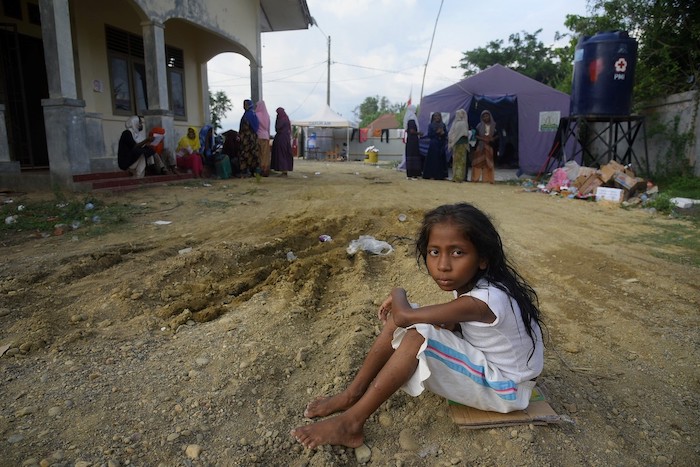
These objectives were already extremely challenging given the combustible security situation in western Myanmar. Now, the situation is complicated by another factor: a new armed conflict in Rakhine State, the home of many Rohingya. This time, the conflict is not between the Muslim Rohingya and the Buddhist-majority military, but between the latter and the Buddhist Arakanese, the state’s majority ethnic group.
Compounding crises
Rakhine is one of Myanmar’s poorest states – more than three-quarters of its people fall below the poverty line. Perceptions of neglect by the central government have long fueled hostility between the Arakanese and the country’s ethnic Bamar majority. This relationship began to deteriorate after the 2015 general election. At the state level, the local Arakan National Party won far more seats than any other party. But the newly victorious National League for Democracy (NLD), headed by Aung San Suu Kyi, nonetheless appointed one of its own to lead the state cabinet.
In 2018, the police killed several Arakanese protesters and arrested a prominent local politician who expressed support for the armed struggle for greater Rakhine autonomy. In early 2019, the Arakan Army (A.A.), a primary actor in that armed struggle, killed more than a dozen police officers. The military labeled the A.A. a terrorist organization and excluded it from ongoing peace talks between the government and ethnic minorities, making any improvement to the situation on the ground even less likely. The military’s retaliation against the A.A. has been fierce, and civilians have been caught in the crosshairs of violence committed by both sides. In March, Yanghee Lee, former U.N. special rapporteur on human rights in Myanmar, made the chilling observation that the tactics used against civilians had begun to resemble those used against the Rohingya.
Rocky road ahead
The severity of the Rohingya crisis has all but overshadowed reports of other atrocities being committed in Rakhine. Moreover, it may be difficult to mobilize the same level of international sympathy for the Arakanese, given that some of its members were complicit in, if not leading, earlier waves of violence against the Rohingya. Nevertheless, Canada’s approach to Myanmar will need to be responsive to these evolving dynamics. Important developments could be right around the corner. The NLD is fresh off a resounding victory in the November 8 general election. In 2021, it could use some of its political capital to inject a much-needed sense of goodwill and positive momentum into the relationship with the Arakanese and other ethnic minorities in Rakhine.
But that may be a steep hill to climb: the central government, citing security concerns, poisoned relations further when it cancelled voting in the November 8 general election for 73 per cent of the state’s eligible voters. It remains to be seen in which direction the NLD government will lean. One thing is certain: in the year ahead, Rohingya repatriation will remain a remote possibility unless the security situation in Rakhine improves dramatically.
5. Youth Without Borders
The origins of the Milk Tea Alliance
Milk tea is perhaps one of the most popular beverages in Taiwan, Thailand, and Hong Kong. Each place has a different take on the classic drink: Taiwanese milk tea is commonly served with tapioca, while Thai milk tea has a distinct orange colour, and Hong Kong’s milk tea is famed for its silk-like smoothness. However, beyond their shared passion for the beverage, milk tea has become a symbol of an online solidarity movement for democratic activists in Taiwan, Thailand, and Hong Kong in the fight against authoritarianism.
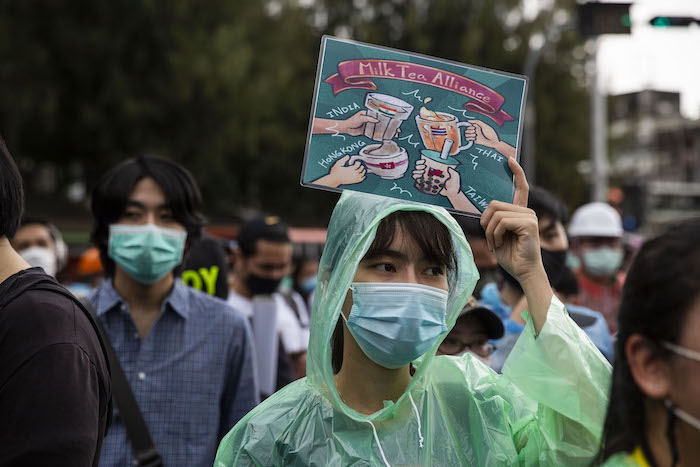
The Milk Tea Alliance started when a Thai actor, Vachirawit Chivaaree, “liked” a tweet that contained pictures labelling Hong Kong as a country in April, enraging Chinese netizens. While the actor later apologized, Chinese internet users dug up a tweet by Chivaaree’s girlfriend which was seen as supporting Taiwanese independence. Chinese cyber trolls responded by attacking the Thai government and monarchy, describing it as incompetent. Not offended by the attacks, Thai netizens embraced the criticisms against the monarchy and the government and deflected the attacks with sarcastic memes. The ensuing online battle drew netizens from Hong Kong and Taiwan in the fight against Chinese internet users, creating an online coalition that connects activists from the three milk-tea-loving places.
A common vision
While the Milk Tea Alliance started as an online coalition against Chinese internet trolls, it has become a broader solidarity movement against authoritarianism. As protests flared up in Thailand earlier this year due to growing calls to reform the monarchy and constitution, Hong Kong and Taiwan activists, who face the threat of authoritarianism in themselves, rushed to support the Thai protesters. For instance, exiled Hong Kong activists Nathan Law and Sunny Kwan launched an online petition on Change.org to garner international support for Thai protesters, drawing close to 25,000 signatures at the time of writing. In Taiwan, 15 civil society groups, including Green Party Taiwan and Taiwan Platform for Sustainable Democracy, gathered at the National Taiwan University and pledged their support to the student protesters in Bangkok. Some groups also helped Thai students studying in Taiwan to raise awareness by assisting with translation at a press conference. What started as an online coalition against Chinese internet nationalists has evolved into transnational democratic activism. As a Thai student activist pledged, “We don’t want to just talk about [the Milk Tea Alliance] online. We want a pan-Asian alliance for democracy.”
The spillover effect
More than just an ideological alliance, Bangkok student activists also took notes on protest tactics in Hong Kong. “Armed” with umbrellas, gas masks, hard hats, and raincoats, Thai protesters adopted the “be water” strategy with fluid rallies across Bangkok. With no centralized leadership, activists coordinated the protest through social media platforms and encrypted messaging app Telegram. The Thai protests bear a resemblance to Hong Kong’s anti-extradition bill movement last year. While there is yet to be any indication that the alliance could drive political change, the Milk Tea Alliance’s very existence highlights the increasing prominence of transnational online activism among youths in the region, particularly in places where there is a lack of institutional mechanisms to address long-standing political grievances. This, combined with a grim employment outlook for youths due to COVID-19 and enabling digital technologies, may create fertile conditions for protests to “spill over” across the region in 2021. For instance, according to the Financial Times the hashtag “if Lao politics was good” began trending on Twitter in October. Responding to the ongoing protests in Thailand, one Twitter user, who appeared to be a Laotian, reportedly claimed Laos as a new member of the Milk Tea Alliance. Other Asian countries to watch include Indonesia, Malaysia, and India, which have all recently experienced social unrest. Equally important to pay attention to in 2021 will be what lessons these governments draw from the Thai or Hong Kong protests and how they apply these lessons in their own governance.
6. Flashpoint Thailand
Political restiveness will endure
Since early 2020, Thailand has been rocked by waves of protests of an unprecedented scale. Triggered by the dissolution of the progressive Future Forward Party (FFP), which came third in the March 2019 elections on a platform critical of the establishment, the movement is a culmination of years of democratic struggle and unaddressed grievances. In addition to political reform, a variety of other issues are promoted by Thai protesters: the perceived lack of economic opportunities amid a deepening recession, a failing education system, and social causes from feminism to LGBTQ rights.
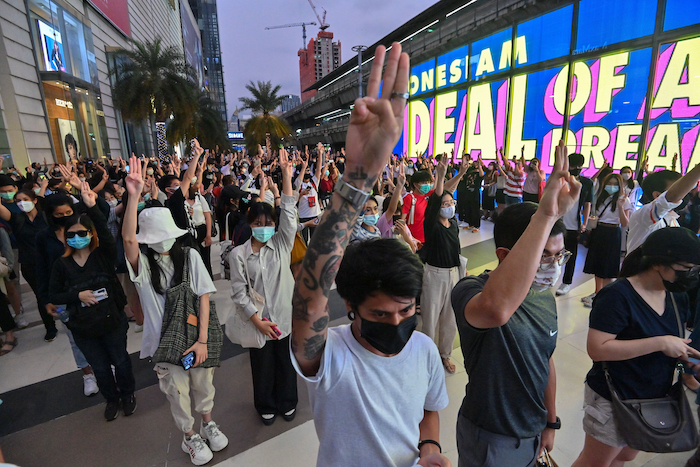
Driving the protests are thousands of youth who boldly challenge a deeply hierarchical society which has not offered them any institutional avenues to make their voices heard. While Thailand has a long history of mass movements, unique to the current one is the explicit challenge to the once-taboo topic of the monarchy, which is protected by strict lèse-majesté laws that make defamation of the Royal House punishable with a jail term of up to 15 years. Protesters argue that the king’s involvement in politics is an impediment to establishing a true democracy. Other demands include the resignation of prime minister, Prayuth Chan-o-cha, and the amendment of the 2017 constitution. Protesters have vowed not to give up until the government accedes to these demands.
Reactions from the establishment
Although the protests have largely been peaceful, riot police recently deployed water cannons at demonstrators, raising concerns about violent confrontation. So far, only the police have been involved in dispersing protesters; however, the possibility of a military crackdown cannot be discounted. Factionalism within the army raises the odds of repression as a royalist segment may rally behind the king. Neither the government nor the monarchy has addressed protesters’ demands in any meaningful way. The prime minister maintains that he will not resign, suggesting instead setting up a committee to find solutions to end the conflict. Pro-democracy leaders have dismissed this proposal. Meanwhile, King Vajiralongkorn has remained remarkably silent despite the criticisms directly aimed at him. Each passing day without a breakthrough pushes both protesters and the establishment closer toward a tipping point – one that could lead to reform or, in the worst-case scenario, violence.
Can the movement sustain itself?
While protests continue on a near-daily basis across the country, the movement will need to form a broader and perhaps institutionalized coalition of supporters to sustain the momentum throughout 2021, which will be difficult in a deeply polarized nation. Protests have spread well beyond Bangkok and into the provinces, even reaching historically marginalized communities such as the Muslim minority in the south. However, the conservative forces have staged counter-protests, demonstrating their unwavering loyalty to the monarchy and their contempt for pro-democracy advocates. Even among those whose support for the king has wavered, it will be difficult to change views and attitudes rooted in Thai tradition and national identity.
Despite concerns about potential violence and uncertainties about the survival of the current youth-led movement, it is undeniable that a transformation of public culture has already occurred in Thailand, one in which social and cultural norms have been shattered. The most public and prominent faces of this movement are young, female, and LGBTQ individuals who advocate for a version of democracy that is inclusive of progressive ideas on gender and sexual equality. Criticisms of the monarchy are more public than ever and take on new creative forms inspired by pop culture, facilitating their dissemination on social media.
Though events in the short-term are hard to predict, youth protesters and their allies have time on their side: soon they may be at the helm of a progressive future nation, replacing elites of an older generation and the existing power structures. What is clear is that in 2021 we will continue to witness the tumultuous beginnings of a new era in Thailand’s modern political development.
7. COVID & Corporate Disruption
2020, the year that globalization forgot
Police spent New Year’s Day 2020 in Wuhan cordoning off a seafood market, while their counterparts clashed violently with protesters in Hong Kong’s business district. Not long after, American soldiers stationed around the globe were ordered to delete the Chinese video-sharing app TikTok from their phones over security concerns, while their government at home pressured the U.K. to block China’s Huawei from its telecoms.
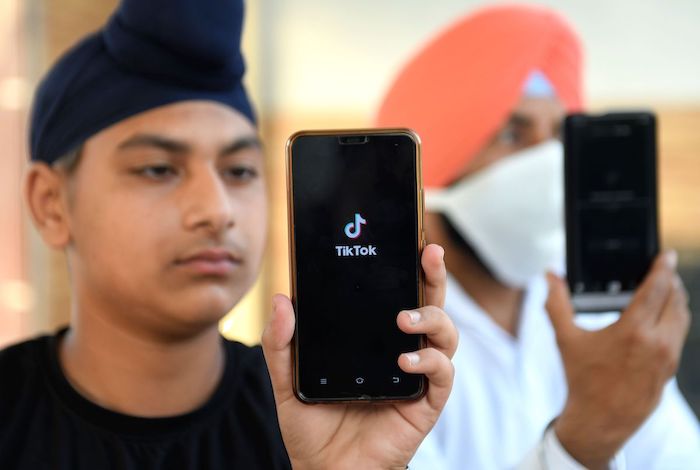
The early days of 2020 foreshadowed the rest of the year, with states deploying heightened security measures that would reverberate through their corporate landscapes, disrupting a decades-long trend towards global economic integration. Hong Kong, long a beacon of that integration, was caught in the crosshairs of the U.S.-China trade war and roiling pro-democracy protests long before the pandemic struck. The June arrival of Beijing’s new National Security Law for the special administrative region further shook the territory’s role as a hub for global commerce. Huawei faced its own disruptions in 2020. The tech giant began the year with key 5G approvals in India and the U.K., only to see its global expansion plans quashed under the thumb of a protectionist Trump administration through a series of policy squeezes on allies that included denial to key chip manufacturers in Asia. National security concerns also drove India’s ban of dozens of Chinese apps, most famously TikTok, which was also forced this year to divest its U.S. operations at the behest of Washington over data security concerns. And then along came COVID-19. Governments worldwide quickly expanded the scope of their security concerns, jumping to ban exports over concerns about access to medical supplies and food, while continuing to institute protectionist measures to block investments in sensitive sectors.
2021, the year of entrenchment
With new technological tools and a greater confidence in using them, governments across the Asia Pacific have announced plans to rebuild and reshape their post-COVID economies. Before 2020, borders mattered little to the region’s multinationals. But years of rising political and economic nationalism and growing gaps between Asian economies will force corporations to rethink the locations and logistics of their manufacturing centres, supply chains, data servers, and corporate headquarters. More than ever, their business strategies will hinge on their ability to comply with, or withstand, onerous and restrictive government regulations. Next year we will surely witness corporations and international banks in Hong Kong tested as their obligations for reporting under the National Security Law put them in conflict with regulatory standards in North America and Europe. Anticipate operational disruptions across the corporate landscape as tech firms in Hong Kong and the wider Asia Pacific seek ways to work within multiple systems, or abandon them entirely. Increased costs to customers and investors can be anticipated as these firms manoeuvre to dodge the fate that befell TikTok by ramping up data security and investing in innovation. Wary of the chaotic new world of international trade wrought by the pandemic, and keen to fuel their domestic economies, regional recovery packages are sure to heavily favour domestic firms, further siloing corporations, talent, and technologies in a Teflon bubble of protectionism.
Accepting the cost of mass disruption
Paradoxically, the number and scale of economic disruptions could normalize these ruptures across the Asia Pacific in 2021, with the corporate world embracing the trend. Faced with interventionist governments keen on maximizing their domestic control, corporations will build redundant supply chains, data servers, and pools of talent – or offload these critical aspects of their businesses to third-party corporations, ultimately boosting trade in services across the region and beyond. Indeed, 2021 could see fewer flashpoints like Huawei or TikTok make the news, as rules and regulations for corporates become baked into the system, and firms adjust to operating across Asia’s parallel regulatory systems. A bellwether for how far governments might push their protectionist tendencies next year could lie with HSBC, which is already straddling contentious politics with its bases of operation on both sides of the Pacific. How the British multinational bank adapts to the new world order of regulatory walls and fences will be telling. While a financial crisis for Hong Kong is in nobody’s interest, a flight of capital from this Asian financial hub could see collateral damage for Canadian and American banks, as well as their investors and the citizens and governments to which they lend.
8. The Rise of Digital Societies
The pandemic accelerator
The COVID-19 pandemic has not only caused social, economic, and mental disruptions, it has also significantly accelerated digital adoption and changed consumer behaviour in Southeast Asia. Since the informal sector makes up a large part of Southeast Asian countries’ economic activities, social distancing policies created economic hurdles regionwide.

These challenges in turn helped accelerate the already rapid shift to the online business models. The number of digital consumers in the region is expected to reach 310 million by the end of this year – a level previously forecasted for 2025. The region’s overall internet economy, having passed the C$130B mark in 2019, is expected to exceed C$392B by 2025.
Governments released a slew of new national policy initiatives in 2020 to speed up technology-led economic development and support digitization for micro, small, and medium-sized enterprises. For example, Indonesia’s National Strategy for Artificial Intelligence will guide the country’s artificial intelligence adoption in health services, education and research, food security, bureaucratic reform, and smart cities for the next 25 years. The National Digital Transformation Roadmap 2025 in Vietnam sets targets and guidelines for the formation of e-government, e-conomy, and e-society. And the Singaporean government allocated more than C$485 million of the Fortitude Fund to support businesses’ digital transformation in incorporating advanced digital solutions and further adopting e-payments.
Exacerbated structural challenges
The COVID-19 crisis has accentuated three existing challenges, among many, in the regional digital landscape. The first is the stark digital-connectivity divide among and within Southeast Asian countries. While Singapore, Malaysia and Brunei have an internet penetration rate of over 80%, the rates for Thailand, Vietnam, Indonesia, and Cambodia are 75%, 70%, 64%, and 58%, respectively. This digital disparity prevented students in the region’s less-accessible areas from continuing their studies online amid the pandemic. The second major challenge is the increasing digital censorship of big tech companies. In 2020, Thailand and Vietnam increased their clampdown on social-media content by forcing Facebook to remove posts that were deemed “illegal” in the name of cyber sovereignty. Such excessive interventions could undermine the trust in Southeast Asia’s governments, thus impeding international investment needed for the growth of Southeast Asian digital markets. The third challenge is the development of a “future-ready” workforce. With the advent of COVID-19 ensuring the acceleration of digitalization, Southeast Asian economies have been grappling with the urgent need to reskill and upskill their workforces.
Governing future digital societies
In 2021, Southeast Asian countries will likely continue to accelerate the formulation and implementation of policies designed to address current structural inequalities and govern domestic digital ecosystems. Next year will most likely see the advent of new policies governing data collection, use and sharing, especially among digital economy leaders like Indonesia, Vietnam and Malaysia, which already have had an eye on data-fueled technologies like smart manufacturing and artificial intelligence applications through 2020.
Updating, reforming and issuing new laws, regulations and standards will be key for building up Southeast Asia’s domestic digital ecosystems, clarifying the policy landscape for domestic tech entrepreneurs and foreign investors. Most significantly, such regulations and input from diverse stakeholders in their formulations will be key determinants of how Southeast Asian societies balance the rights to privacy and cybersecurity requirements with the needs of emergent start-up sectors and Industry 4.0 technologies. Despite its challenges, Southeast Asia will continue to be a vibrant market and innovation environment as societies and businesses become more enmeshed with technology.
9. The New Climate Change Revolutionaries
China, Japan, Korea to lead the charge
Speaking by videolink to the United Nations General Assembly in September, Chinese President Xi Jinping announced that China’s new goals for carbon emissions would see it hit peak emissions before 2030 and aim for carbon neutrality by 2060. A month later, Japanese Prime Minister Yoshihide Suga announced his country would achieve net-zero carbon emissions by 2050.
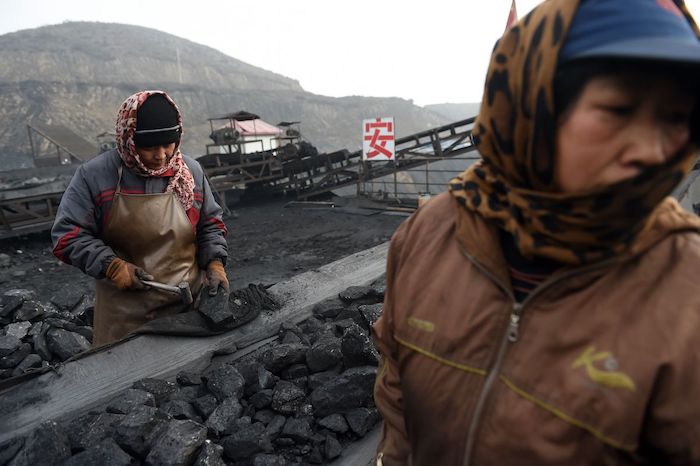
South Korea’s President Moon Jae-in followed Suga’s pledge two days later. Together those countries produce nearly one-third of all carbon emissions worldwide. China ranks number one in carbon output, while Japan and South Korea take the fifth and eighth spots, respectively. 2020 has been a year in which the deleterious effects of climate change are becoming increasingly easy to identify in the Asia Pacific region. The devastating bushfires in Australia, fires in Indonesia that destroyed forests the size of the Netherlands, repeated deadly typhoons in the Philippines, and record locust swarms in Pakistan and India are a few such examples.
Decarbonizing – a long road ahead
The Northeast Asian governments’ new targets are significant and come as signatories to the Paris Agreement begin reporting and updating their “nationally determined contributions” required every five years under the Agreement. Yet, many observers believe the emission reductions necessary to keep global mean temperatures from rising 2°C above pre-industrial levels would be a Herculean task requiring unprecedented economic transformation, international coordination, and technological revolution. Consider that over 60 per cent of the Chinese electricity supply comes from coal-fired power plants and that in the first half of this year, China built more new coal-fired power plants than any other country. Coal is a significant contributor to global carbon emissions and those carbon-intensive plants will operate for decades. It accounts for 32% of Japan’s electricity generation and about 40% of Korea’s. And although renewable sources of electricity generation are expanding rapidly in these three countries, they account for about 26 per cent in China (mainly from hydro), 17% in Japan and only 6% in Korea. While Japan will decommission about 100 low-efficiency coal-fired power plants by 2030, it has plans to build 22 new plants by 2025.
Concrete initiatives for 2021
So far, all of China’s, Japan’s, and Korea’s plans for achieving their mid-century carbon-neutral goals allocate big reductions toward the end of their transition periods. Some analysts think that is understandable as energy technologies developed in the coming years and decades promise higher efficiency and will allow for quicker, although currently unquantifiable, reductions. Setting goals for future generations to attain is fine, but can countries in the Asia Pacific enact measures to bridge the gap between mid-century goals and current action?
China’s powerful central bank is considering instituting mandatory requirements on the country’s state-owned financial institutions to promote environmentally-friendly economic activity, including through green bonds and financing for low carbon energy, infrastructure, and manufacturing projects. Perhaps in 2021, China and South Korea could commit not to finance coal-fired power plants abroad, as Japan has recently done. This could restrict a large-scale growth in emissions in developing Asian countries, especially ones with coal power projects planned as part of the China-led Belt and Road Initiative or others financed through the Asian Infrastructure Investment Bank. Perhaps 2022 could be the year of broadening and deepening carbon pricing or trading mechanisms. Metropolitan Tokyo’s Cap-and-Trade Program was launched in 2010 and has led to a 27 per cent emissions reduction over baseline years in the mid-2000s. The Korean Emission Trading Scheme, or KETS, was established in 2015. China recently delayed its plans to roll out its carbon trading system broadly, firstly in its electricity generation sector and then across multiple industries. Such initiatives could bring some of the world’s largest emitters closer to their decarbonization goals in the short term instead of in a generation, and that would be a good thing for the planet.
10. Answering the Call of Poverty
Poverty rises due to COVID-19
In 2021, the number of people living in poverty in the Asia Pacific is expected to increase for the first time in 20 years, according to a recent World Bank report. If the poverty line is set at C$7.33/day, approximately 38 million people will be pushed into or remain in poverty. Analysts attribute the rising level of poverty in the Asia Pacific to the region’s overall economic decline due to the COVID-19 pandemic. The World Bank projects that the region, excluding China, will have -3.5 per cent growth in 2020.
One component of this decline is the economic vulnerability and widespread closures of micro, small and medium-sized enterprises (MSMEs), which form the backbone of Asia Pacific economies. In the Asia-Pacific Economic Cooperation (APEC) - a bloc of 21 member economies - MSMEs comprise 97 per cent of all businesses and employ half of the region’s workforce. These enterprises provide crucial opportunities to marginalized populations, especially women, youth, and rural communities.
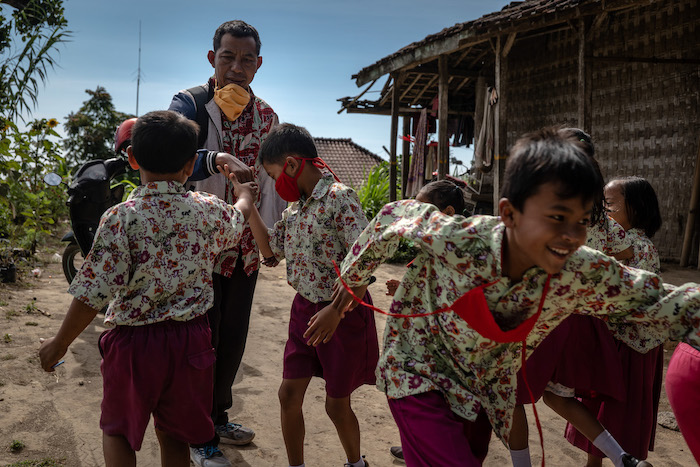
The pandemic has greatly shaken this economic mainstay because MSMEs generally lack the resources to adapt to the rapidly changing conditions. Given that the pandemic’s impacts on business operations and trade will likely continue for years, a sustainable and ongoing transition to the digital economy will be vital to ensuring the survival of many MSMEs.
Digitalization of MSMEs
As governments worldwide adjust to the new norm, 2021 may usher in a new approach to supporting MSMEs. Already, Asia Pacific economies are stepping up with new initiatives and policies to help MSMEs digitalize and enter the digital economy. Digitalization, the ongoing transition of physical business operations to virtual ones, is fast becoming a top priority for many governments. This encompasses changes to business operations, such as digital payment methods, online shopping, and consumer engagement.
2021 will be a pivotal year for the region’s governments to address and assist with the rapid technological change needed by investing in MSME digitalization and building robust internet infrastructure. With pressure for governments to adequately respond to the pandemic, 2021 may see more policies that address the root causes of inequality, especially targeting women, youth, and other minorities as they attempt to make the transition to the digital economy. Otherwise, economies risk further exacerbating pre-existing inequalities from before the pandemic and furthering the digital divide. For example, key regional players such as Malaysia and Indonesia had already committed themselves pre-pandemic to becoming the next digital economic powerhouses. As such, we will be watching them closely in 2021, specifically to see the success of measures like Malaysia’s SME Business Digitalization Grant, which provides funding for entrepreneurs, and Indonesia’s #BanggaBuatanIndonesia (Proudly Made in Indonesia) initiative, which gives digital training to MSMEs in collaboration with Gojek and other companies.
Innovating solutions
With the world facing unprecedented circumstances, global leadership will be a crucial ingredient to economic recovery. The APEC Leader’s Summit hosted at the end of 2020 shows great leadership potential from the member economies. Under Malaysia’s leadership this year, APEC leaders committed to helping MSMEs transition to the digital economy and have reiterated their support for a multilateral trade system and regional economic integration. This collaboration and leadership will be crucial in the new year. As APEC transitions to new leadership under New Zealand in 2021, we expect to see a flurry of activities that will further develop trade and economic policies aimed at supporting a post-COVID economic recovery with MSMEs at the forefront.
Complementing the APEC host economy’s activities, 2021 will also see the release of innovative research from Canada through initiatives like the APEC-Canada Growing Business Partnership. In Spring 2021, the Partnership will publish a capstone policy paper, which analyses the common challenges and opportunities for MSMEs in the Asia Pacific. APF Canada will also host the Partnership’s capstone conference, which will invite policymakers, experts, and entrepreneurs to discuss lessons moving forward from the pandemic. In short, 2021 will be the year to be keeping an eye out for an influx of small businesses making digital leaps.
Time Capsule: APF Canada's Earlier Year End Dispatches
Go back in time with APF Canada's prognosticators and read our other year-end reviews:

